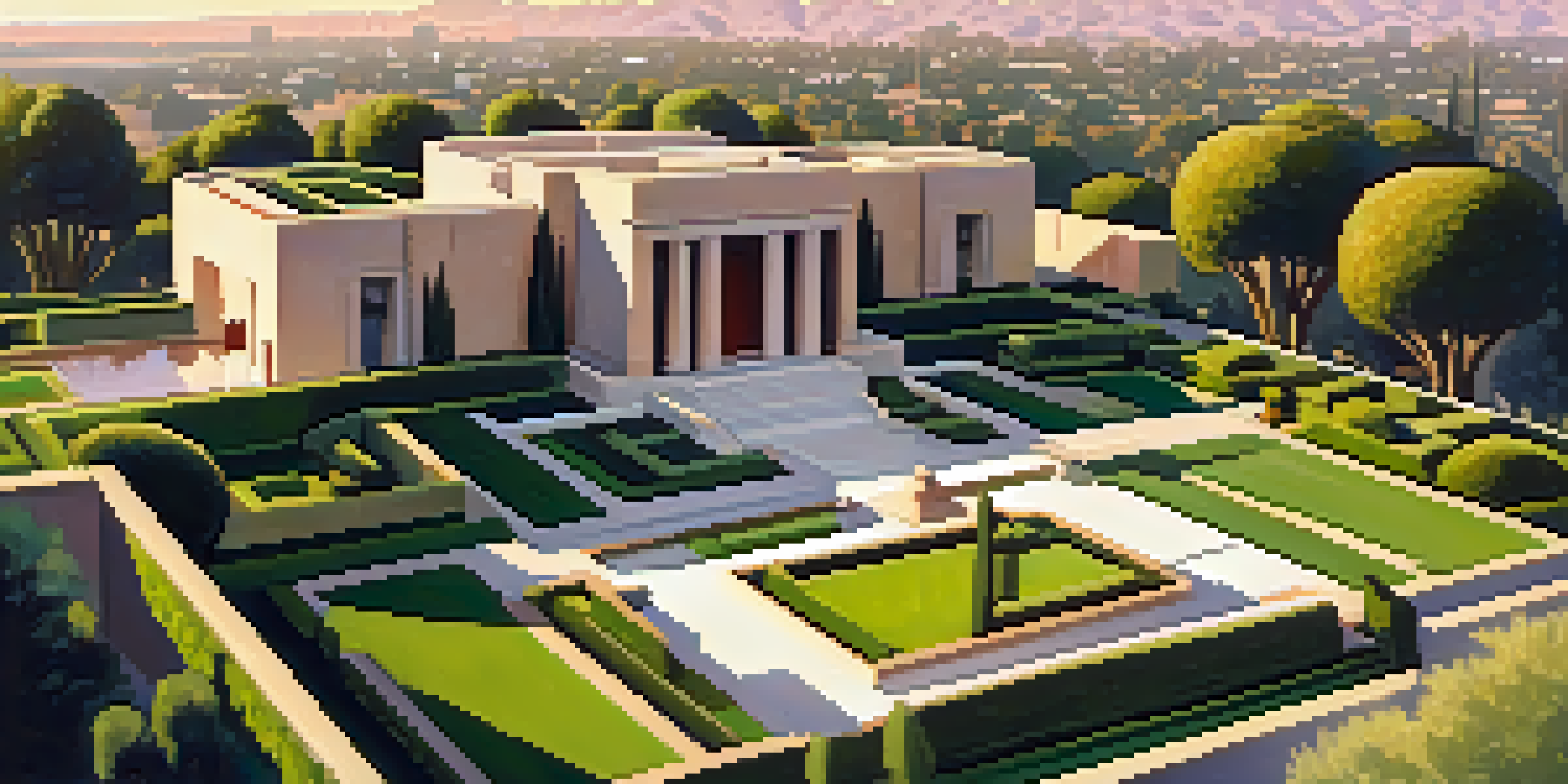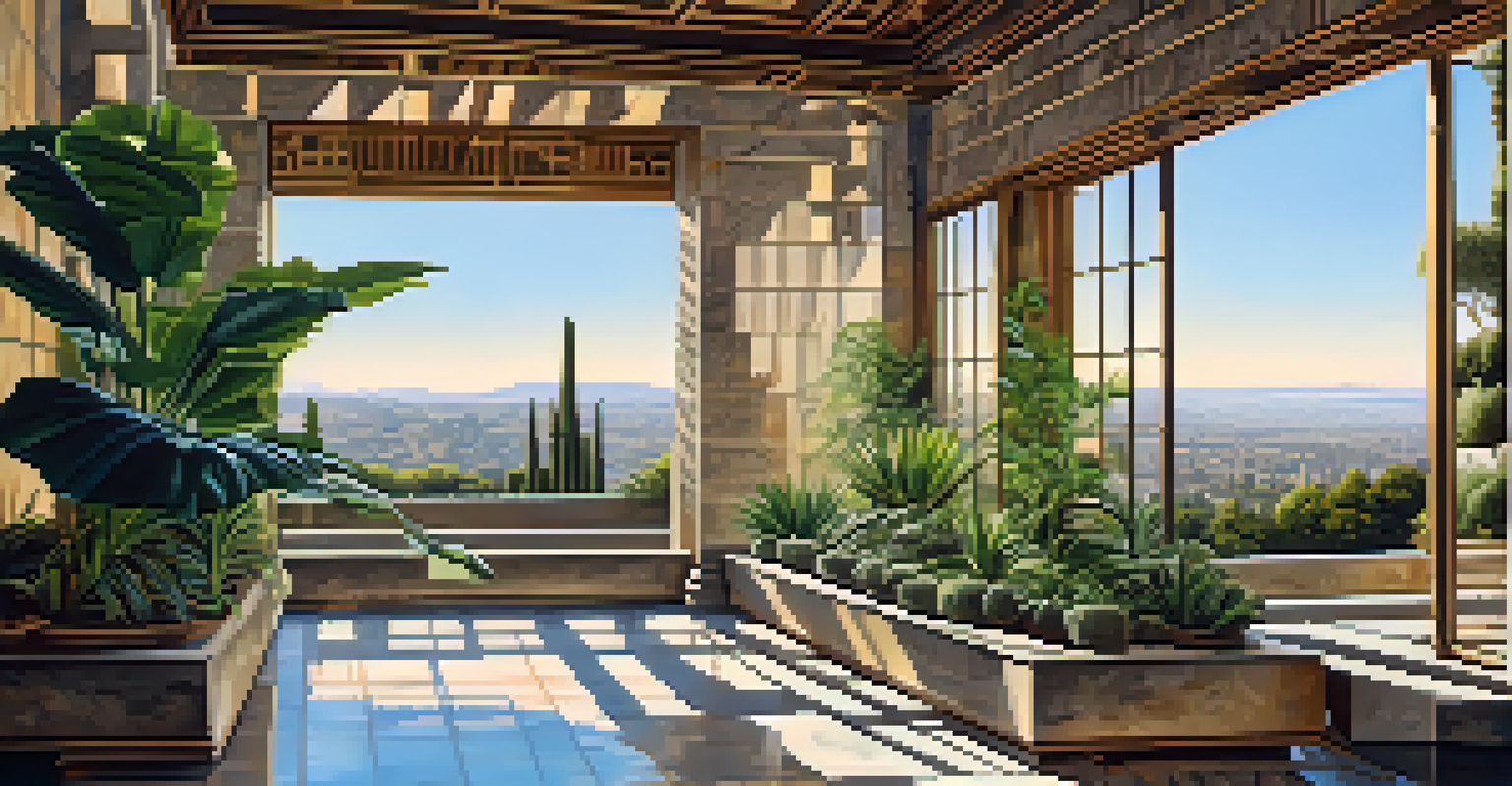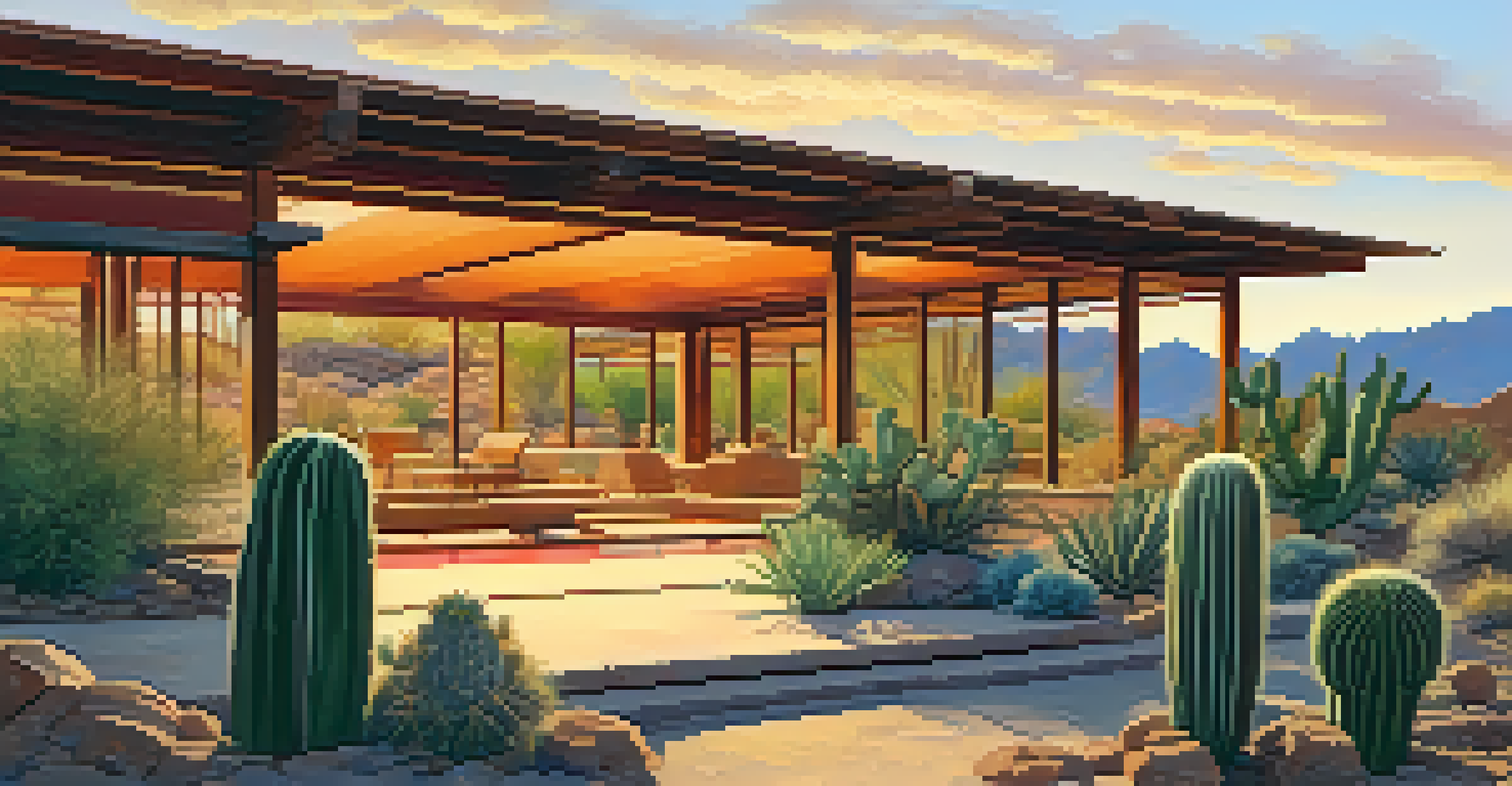The Role of Frank Lloyd Wright in LA's Architectural Scene

Frank Lloyd Wright: A Pioneer of Modern Architecture
Frank Lloyd Wright is often hailed as one of the most significant architects of the 20th century, and his influence extends well beyond his native Chicago. His innovative designs and commitment to organic architecture laid the groundwork for modern architectural practices. In Los Angeles, this pioneering spirit resonated deeply, inspiring local architects to adopt and adapt his principles.
Space is the breath of art.
Wright's philosophy centered around harmonizing buildings with their environment, which was particularly relevant in the diverse landscape of Southern California. This approach encouraged architects to create structures that complemented the natural beauty of the area, rather than imposing themselves upon it. Thus, Wright's vision became a catalyst for change in LA's architectural scene.
His work in Los Angeles not only introduced new styles but also challenged existing norms, encouraging a shift towards more open, flowing spaces. As a result, his influence is evident in many iconic structures throughout the city, making him a pivotal figure in the evolution of LA's architectural identity.
Wright's Iconic Works in Los Angeles
One of Wright's most famous contributions to Los Angeles is the Hollyhock House, completed in 1921. This residence, designed for oil heiress Aline Barnsdall, reflects Wright's unique ability to integrate architecture with nature. The house features a striking design with a distinctive use of geometric shapes, which has become a hallmark of his style.

Another significant project is the Ennis House, completed in 1924, which showcases Wright's innovative use of textiles and concrete blocks. The Ennis House is a prime example of how he incorporated the local landscape into his designs, creating a home that feels both contemporary and timeless. This structure has also become an iconic backdrop in numerous films and television shows.
Wright's Impact on Modern Architecture
Frank Lloyd Wright's innovative designs and philosophy of organic architecture have profoundly shaped contemporary architectural practices, particularly in Los Angeles.
These works not only highlight Wright's architectural genius but also serve as a testament to his lasting impact on the cultural fabric of Los Angeles. They invite both locals and tourists to appreciate the seamless blend of design and environment that characterizes his methodology.
The Influence of California's Climate on Wright's Designs
California's unique climate played a crucial role in shaping Frank Lloyd Wright's architectural designs. The warm, dry weather allowed for an emphasis on outdoor living spaces, which Wright integrated into his projects. This focus on blending indoor and outdoor environments became a defining feature of his work in Los Angeles.
The longer I live, the more beautiful life becomes.
For instance, his designs often included expansive terraces and large windows that opened up to lush gardens and natural surroundings. This not only enhanced the aesthetic appeal of the homes but also promoted a lifestyle that embraced the beauty of the outdoors. Wright's ability to adapt his designs to the local climate helped to create a distinct architectural identity in Los Angeles.
Moreover, this approach influenced countless architects who followed in his footsteps, leading to a greater emphasis on outdoor spaces across the region. As a result, Wright's legacy continues to inspire contemporary designs that prioritize harmony with the natural environment.
Wright's Philosophy of Organic Architecture
Wright's philosophy of organic architecture emphasizes harmony between human habitation and the natural world. This principle guided many of his designs in Los Angeles, where he sought to create spaces that felt inherently connected to their surroundings. By using local materials and incorporating natural elements, he aimed to create a sense of unity between the built environment and nature.
This concept is vividly illustrated in his work at the Taliesin West, where he utilized desert materials and adapted his designs to the landscape. In Los Angeles, this philosophy encouraged architects to consider not just the aesthetics of their buildings but also their ecological impact. Wright's teachings inspired a generation of architects to prioritize sustainability and environmental consciousness in their work.
Integration with Nature
Wright's emphasis on blending buildings with their natural surroundings has inspired a generation of architects to prioritize ecological harmony in their designs.
As a result, the organic architecture movement has left a lasting impression on LA, with many contemporary architects continuing to explore ways to harmonize their designs with the environment. Wright's influence in this area remains a guiding force for those who seek to create thoughtful, sustainable architecture.
Wright's Legacy and Its Contemporary Impact
Frank Lloyd Wright's influence on Los Angeles architecture can still be felt today, as many modern architects draw inspiration from his innovative designs and philosophies. His emphasis on open spaces and integration with nature has become a guiding principle for contemporary architecture in the region. As urban areas continue to grow, the need for designs that maintain a connection to the environment remains crucial.
Moreover, Wright's work has paved the way for discussions around sustainable building practices, as architects look to balance the demands of modern living with ecological responsibility. His legacy encourages a re-examination of how we approach urban design, pushing for structures that prioritize harmony with the surrounding landscape.
As a result, Wright's impact on Los Angeles architecture is not just historical; it continues to shape the direction of architectural innovation. The principles he championed remain relevant, inspiring new generations to create buildings that resonate with both the environment and the community.
Challenges Wright Faced in Los Angeles
Despite his significant contributions, Frank Lloyd Wright faced numerous challenges during his career in Los Angeles. The local architectural scene was dominated by traditional styles, making it difficult for Wright's innovative ideas to gain acceptance. His unconventional designs often clashed with the expectations of clients and critics, leading to skepticism about his approach.
Wright also encountered financial difficulties, particularly with projects like the Hollyhock House, which faced budget overruns and construction delays. These challenges tested his resolve and forced him to adapt his vision to meet practical constraints. Nonetheless, Wright's perseverance ultimately led to the successful completion of several iconic structures in the region.
Challenges and Resilience
Despite facing skepticism and financial difficulties, Wright's determination to push architectural boundaries solidified his legacy and encouraged future architects.
These obstacles only fueled Wright's determination to push the boundaries of architectural design. His ability to navigate these challenges not only solidified his legacy but also inspired future architects to remain steadfast in their vision, despite external pressures.
The Enduring Appeal of Wright's Architecture
The timeless appeal of Frank Lloyd Wright's architecture continues to captivate audiences today. His designs, characterized by their unique forms and thoughtful integration with nature, have an enduring quality that resonates with both admirers and critics. Many of his buildings in Los Angeles are celebrated as cultural landmarks, drawing visitors from around the world.
Moreover, Wright's work has influenced various design movements, including the Arts and Crafts movement and mid-century modernism. This broad impact highlights his role as a catalyst for architectural evolution, encouraging a shift towards more innovative and expressive designs. His ability to blend aesthetics with functionality remains a benchmark for architects today.

In essence, Wright's architecture transcends time, inviting us to appreciate the beauty of our surroundings while reflecting on the relationship between humanity and nature. This enduring legacy ensures that his work will continue to inspire future generations of architects and design enthusiasts alike.